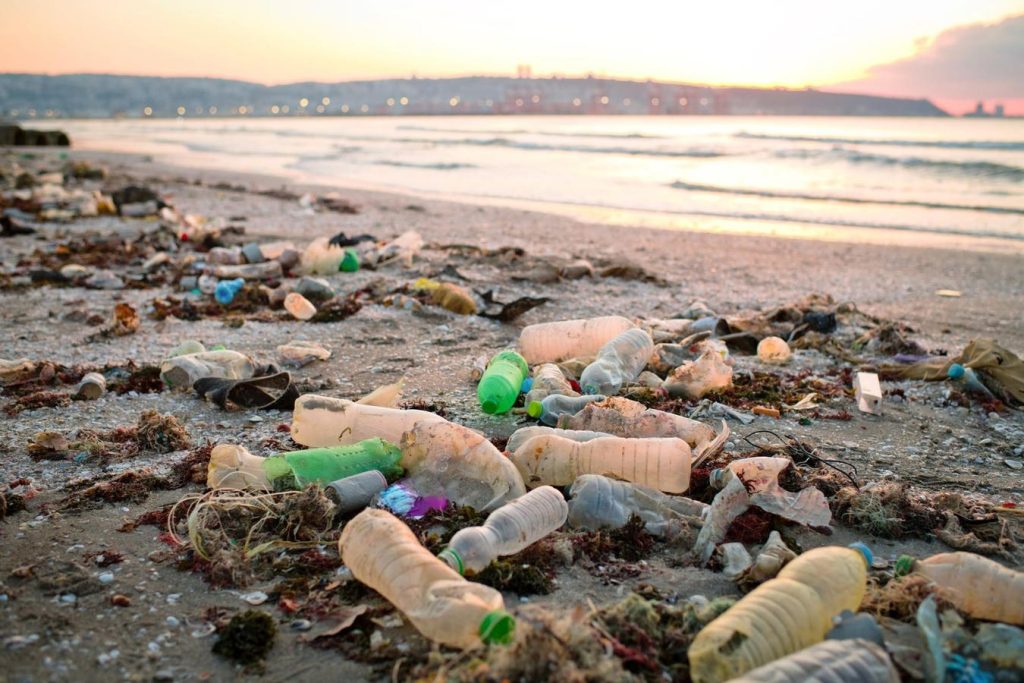In March 2022 at the fifth session of the UN Environmental Assembly, 175 nations passed Resolution 5/14 to develop an international legally binding instrument on plastic pollution, including in the marine environment. This resolution requested the Executive Director of the UN Environment Programme (UNEP) to convene an Intergovernmental Negotiating Committee (INC) to develop an instrument which would “be based on a comprehensive approach that addresses the full cycle of plastic, including its production, design, and disposal.” The goal is to complete the negotiations by the end of this year. The INC has held four sessions. The hope is that the treaty will be agreed in the fifth session on November 25—December 1 in Busan, Republic of Korea.
When it comes to the environment, climate is the overwhelmingly dominant issue in the public discourse. Biodiversity/Nature loss is rapidly arising as a topic and there is a clear relationship between the two. Relatively less general attention has been paid to plastic, but those who know about this issue realize it is an enormously important one that has devastating effects on climate and biodiversity—and thus all of us. A 2022 OECD report estimates that global plastic waste will triple by 2060, from 353 million tons (Mt) in 2019 to 1,014 Mt in 2060. In addition to the serious problems created for human and other life forms from plastic pollution in land and water (as discussed in this short video by Sir David Attenborough), are its implications for global warming. As noted by Shardul Agrawala, Head of the Environment and Economic Integration Division of the OECD Environment Directorate, “GHG emissions from plastics production and end of life are projected to double to 4.3 gigatonnes of carbon dioxide equivalents of GHG emissions in 2060.”
Where do all these plastics come from? According to UNEP, about 400 million metric tons of plastic is produced every year, with packaging, such as single-use plastic products for food and beverage containers, as the biggest end market for the material—over one-third of all plastic being produced. Plastic is certainly widely used by the consumer goods industry, so I sat down with some notable CEOs to understand what they are looking for from this plastics treaty.
The CEOs I spoke to are among the 230+ members (including companies, financial institutions, and NGOs) of the Business Coalition for a Global Plastics Treaty (the Coalition) which was convened by the Ellen MacArthur Foundation and the World Wildlife Fund. The coalition’s objective is to bring together a diverse group of organizations “with a shared ambition towards a circular economy for plastic, and a strong commitment to support an effective, legally binding treaty to end plastic pollution.”
What leaps out to me is the last point in the sentence, “legally binding treaty to end plastic pollution” and so I’ve marked it in bold. While admittedly a sweeping generalization, companies aren’t typically eager to embrace regulation, let alone regulation based on a legally binding treaty supported by most of the world’s governments. But in my recent article in the Harvard Business Review, “Moving Beyond ESG,” I note that “regulation is the primary way in which negative externalities are mitigated.” And plastic pollution is currently a big negative externality. Fisk Johnson, Chairman and CEO of global manufacturing company SC Johnson, is clear that regulation is the main lever we need to pull. “You need everyone in the plastic ecosystem working together at scale to solve the issue. The only real way to do that is through regulation, both on an international level and a country level,” he told me.
Voluntary efforts by companies involved in programs such as the Ellen MacArthur Foundation’s Global Commitment are laudable but problematic for two reasons. The first is that only some companies are doing this. The second is that there are limits to what they can do without putting themselves at a competitive disadvantage. Hein Schumacher, CEO of consumer goods company Unilever, agrees. “The good news is that on a voluntary basis, we have made significant progress. The problem is you can’t continue on a voluntary basis.”
In light of the drawbacks of the voluntary approach, some countries have or are considering passing laws to deal with this. Examples include the U.K.’s tax on packaging that doesn’t contain at least 30% recycled material, or Nigeria’s ban of some single use plastic items, such as polystyrene foam packaging, which is not widely collected or recycled.
Two problems exist here as well. The first is that these do not exist in some major countries which are big plastics polluters, such as the United States, and even where they do exist, the neighboring country may have a softer approach which simply shifts the problem next door. The second is that this unorganized medley of regulations creates enormous complexity for multinational companies operating in countries where these regulations exist. As Schumacher pointed out, “the patchwork of regulation that we currently have is simply not working.” Johnson agreed by stating that “the emerging web of plastic regulation in various parts of the world is going to add cost and complexity unless there is consistency in rules.”
That’s why the CEOs I spoke to said that having a global and legally binding treaty on plastic is essential. And the Coalition members are strongly, actively, and vocally supporting this. Johnson wants to see an ambitious treaty, especially one that “provides mandatory directions for companies as it relates to product design rules. Having consistency in what we aim for would be enormously helpful to bring economies of scale and make progress on the plastic pollution problem.”
Of course, other stakeholders are weighing in on this and it is important that all voices are heard, but I find it encouraging that the Coalition is putting forward a clear point of view from business. I credit both the UN process and the Coalition for looking to engage productively. This was key to the Montreal agreement on ozone and played a role in the Paris Agreement for climate.
The next step for negotiations is an “intersessional meeting” to be held over four days in Bangkok starting on August 24. Governments will be meeting to seek to make progress on two key topics within the treaty—how to decide on the most problematic plastic products and chemicals used in plastic, which could be phased out, and what design rules for plastic products could be enshrined in the treaty
Despite the time spent negotiating so far, the full scope of the treaty is still being decided. For the Business Coalition members, it is imperative that it include plastic packaging. At the core of this is a set of common product design rules, which could be based on existing voluntary design rules such as the Consumer Goods Forum Golden Design Rules. Some examples of the nine rules are:
· Increase Value in PET recycling by using only clear or transparent blue/green PET and ensuring sleeves and labels are not problematic for recycling.
· Remove problematic elements from packaging, for example by phasing out undetectable carbon black, PVC and PVDC, Expanded Polystyrene (EPS) and PS (similar to the Nigeria ban).
· Eliminate excess headspace within flexible packaging, with a maximum of 30% or less headspace.
Many companies have agreed to voluntarily follow these rules, already overcoming technical hurdles with practical solutions that the CEOs I spoke to said are ready to scale. As pointed out previously, there will always remain drawbacks with voluntary only efforts. The only way to take them to scale is through mandatory rules.
Thus, it is essential that these design rules, or something like them, be made mandatory through a globally binding treaty. This will spur innovation, but innovation requires investments that pay off over time. If every company is subject to these rules, investors will support the companies making them. As Schumacher points out, “With global rules the business case will become more certain. That’s good for investment.” Tove Andersen, CEO of recycling company TOMRA, agreed that mandatory rules can allow innovation and investment to flourish. “Businesses want and needs regulation to support [efforts on tackling plastic pollution], to give you the framework in place to drive the innovation and investment needed to tackle the problem.”
I’d also like to highlight three other important topics that deserve attention: phasing out problematic and avoidable plastic, (2) implementing Extended Producer Responsibility (EPR) schemes, and (3) improving waste management.
Aligning countries around phasing out the most problematic and avoidable plastic must be a priority for the treaty. Let’s take an example of something that is widely accepted as a challenging type of plastic—Polyvinyl Chloride, or PVC. It is clear it should not be completely phased out across all applications, as it has some good uses, but it is particularly problematic when used in packaging since it is more likely to be incinerated, causing toxic fumes. Unilever has already exited the use of PVC in its plastic packaging portfolio, proving this can be done. But reducing the use of PVC in packaging as much as possible will require mandatory global rules. Schumacher noted that “Now is the moment that could be reinforced by governments through a treaty. So that it is not an implied set of rules, but it’s actually a governed set of rules.”
Much also remains to be done to improve infrastructure for plastics’ collection, reuse, and recycling. These must be funded through globally harmonized EPR schemes which many companies are committed to supporting. In order to deliver on their promise, they must be based on a common, core set of principles that ensure that fees are equally applied to all companies and are appropriately structured based on the actual cost to recycle the material.
When it comes to waste management, we might emphasize that effective systems for waste management and recycling already exist in some countries, but the point is that broader implementation and scaling requires an enabling policy framework. Andersen added, “We have many solutions that you could just roll out tomorrow. Get the regulation in place, make it harmonised and consistent, and you can reduce plastic pollution significantly.”
The plastics treaty is a live negotiation. What governments decide to do in the coming months could have a significant and lasting impact on our planet. At the upcoming ”intersessional meeting” for the treaty, Johnson hopes progress can be made on binding rules. “At a minimum, I would hope the treaty would have definitions and rules around categories such as product design and elimination of chemicals of concern. Each country could choose to adopt those rules on their own timeline depending on their unique regional circumstances. With global rules, industry would all be moving toward the same goals even though implementation timelines might differ.”
While some progress has been made, clearly some business leaders are concerned that the end agreement will not be ambitious enough. Schumacher was one of those. “I am worried that despite all the progress we’ve made [on plastic packaging], we might not get a treaty that delivers the clarity we need on regulation,” he told me. I’m heartened to see many CEOs personally stepping forward to encourage an agreement with true regulatory power. One that would clearly support businesses’ interests in trying to tackle plastic waste, as well as seek to deal with the root cause of much of plastic pollution—plastic packaging.
An encouraging sign of progress came last week. Reuters reported that there has been a significant positive shift in the U.S. government’s position on the plastics treaty along three dimensions. First, to set a target to reduce the amount of plastic produced. Second, to create a list of harmful chemicals used in plastics which should be phased out. Finally, and for the first time, the U.S. has noted the importance of global rules as preferable to a patchwork of national regulations. I am personally very pleased to see this shift in position. Strong support from the U.S. seems absolutely essential to secure a meaningful global treaty.
Read the full article here










